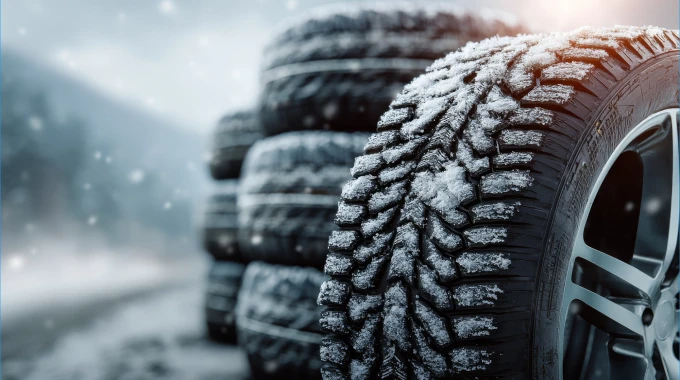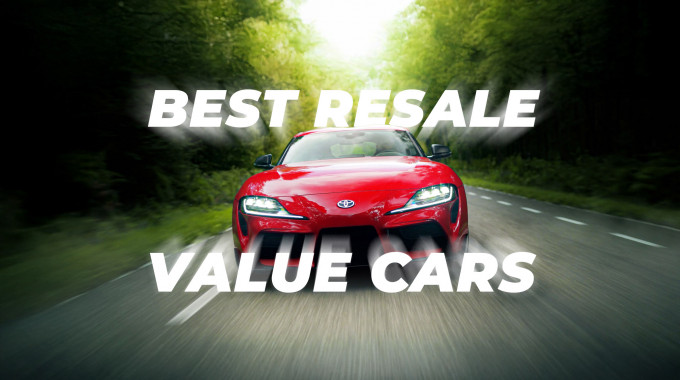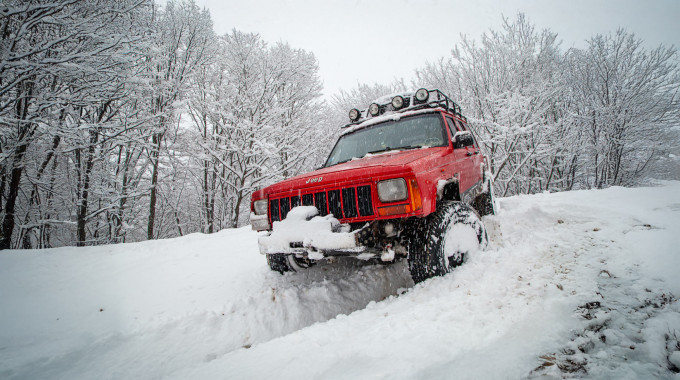
Oct 17, 2025
Buying a Winter Beater: 15 Cars That Won't Break the Bank
Tempted to buy a second car as a winter beater just to bear the brunt of Old Jack Frost? You aren’t alone. A winter beater is a vehicle that you drive for four to six months per year so that your ‘good’ car isn’t exposed to harsh, sub-zero conditions. Some Canadians are attracted to the idea of protecting their main vehicle from the harsh elements, but there are pros and cons to consider.
The upside of a winter beater? There are undoubtedly a few:
- Your ‘good’ car stays safe and protected. The goal is to keep your primary daily driver pristine, which means lower maintenance costs overall.
- It keeps your ‘good’ car’s resale value high. You’ll be putting fewer clicks on the odometer and potentially avoiding accidents on your vehicle history report that could slash your resale value.
- Less stress about wear & tear. If you get a scratch or dent on your winter beater, or if you get into a fender bender, so be it. That’s why you have it.
But a cheap winter car isn’t everything it’s cracked up to be. The idea for most people includes purchasing a car for under $7,500 (often much less) because it is a secondary car, after all. That can lead to its own set of concerns:
- You’ll be doubling up the cost of maintenance. You’ll have two cars to change the oil on, replace fluids, etc.
- It’s probably less comfy. Odds are, your winter car won’t have heated seats or a heated steering wheel, remote start, or the AWD or suspension you want for your comfort and security.
- Will it even last the winter? Depending on what you can afford, a winter beater is usually up to 15 years old. Older vehicles might not stand up to the harsh winter conditions and require replacement sooner than you imagined.
Buying the best used car for winter only
Perhaps the best feature any winter beater can have is an all-wheel drive or four-wheel drive system to maximize traction on snow and ice. The bad news? Vehicles with AWD or 4x4 can be pricier to buy and fuel (and we're guessing you’re not shopping for a premium luxury SUV as your winter beater). The good news? You don't strictly need AWD to tackle winter driving. A front-wheel-drive car with a good set of winter tires can be virtually unstoppable in snow. In fact, with dedicated snow tires mounted on basic steel wheels, even an older compact car can feel unstoppable on snowy roads. As one reader noted, now that most cars have fuel injection, they'll start even on the coldest morning – so as long as your beater has decent ground clearance, a working defroster, and proper snow tires, “anything will do” in winter.
There are also plenty of fun cars out there that make great winter beaters. With the right preparation, these vehicles can get through pretty much any snow or ice, and their cheapness means you won’t lose sleep over a bit of rust or a minor ding. Ultimately, the goal is to find the right car at the right price. Below, we’ve compiled a list of some of the best winter beaters to buy (all available in Canada). These tend to be older used cars that balance affordability, reliability, and winter-driving capability.
1. Honda Civic
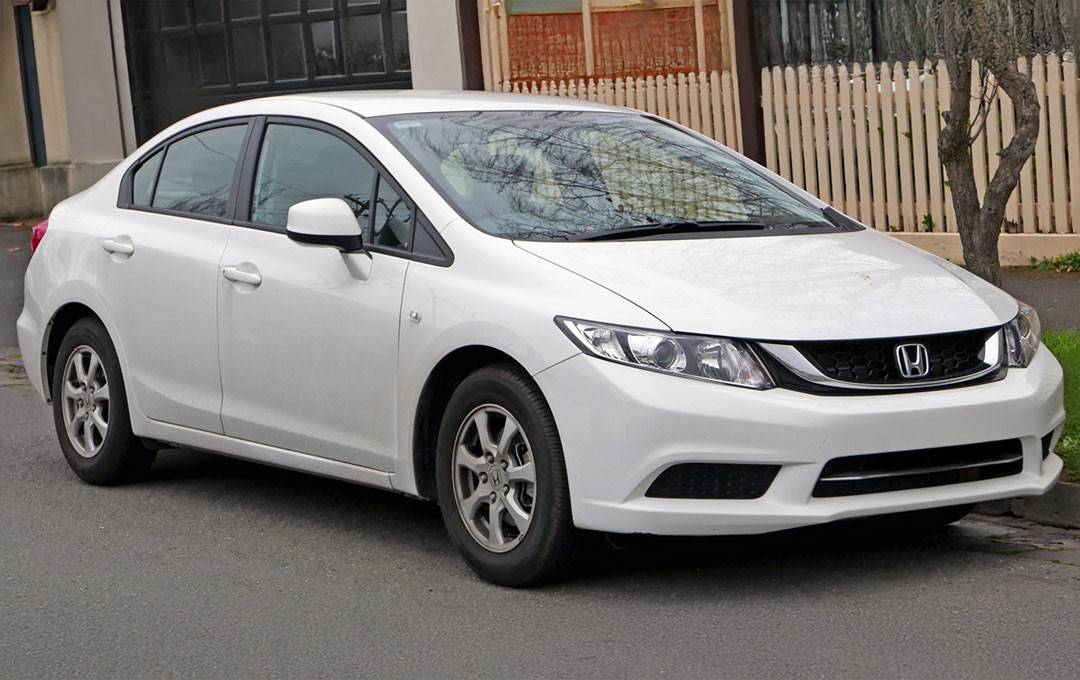
The Honda Civic is a popular choice for a winter beater because it’s inexpensive, widely available, and extremely reliable (many Civics last well beyond 200,000 km with basic maintenance). It’s a front-wheel drive car, which means it handles snow and slushy roads reasonably well – especially if you invest in proper winter tires. Parts are plentiful and cheap, and you can find older Civics for a bargain price. It may not have the ground clearance of an SUV, but for most city and highway winter driving, a Civic with snow tires is a good winter car that will start every cold morning and sip fuel frugally.
2. Toyota Corolla
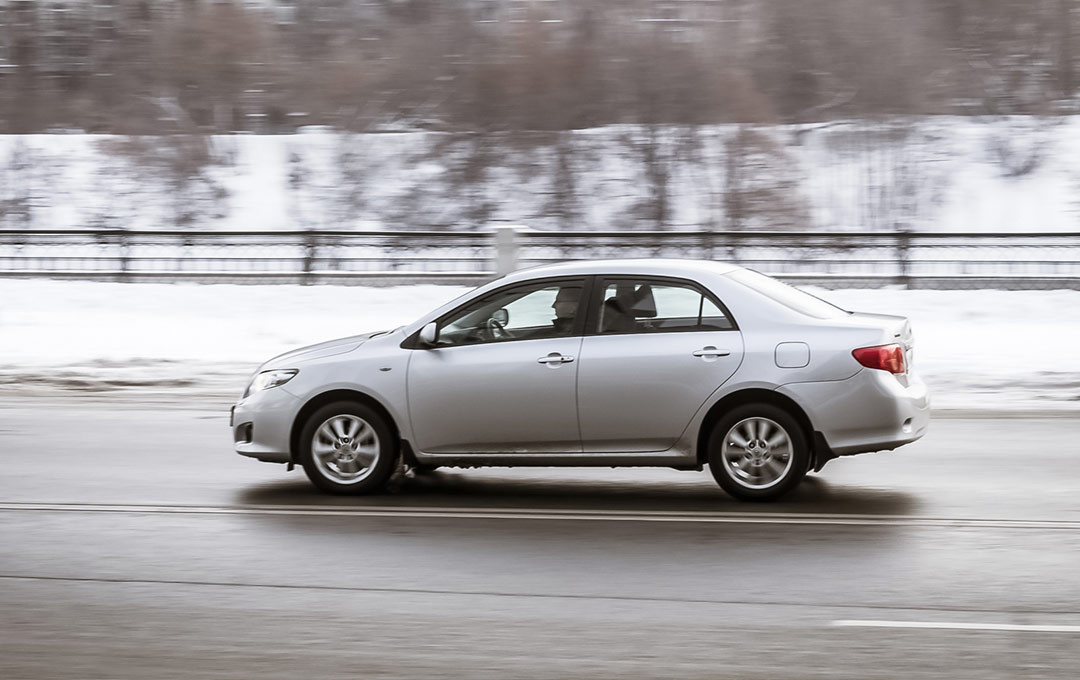
Like the Civic, the Toyota Corolla is renowned for rock-solid reliability and low running costs, making it a sensible winter beater. You can find many older Corollas (and its Matrix hatchback twin) at budget prices, and they tend to handle cold weather without fuss. The Corolla’s front-wheel drive and balanced weight make it predictable on snow and ice. While it’s not a flashy or fun car, it will simply start up and get you where you need to go in the winter. Just equip a good set of winter tires, and a used Corolla will plow through winter weather with minimal drama.
3. Subaru Impreza or Forester

Perhaps no list of winter beaters is complete without mentioning Subaru. Older Subaru Imprezas and Foresters are affordable and come standard with all-wheel drive – a huge asset for winter traction. These cars are often considered good winter cars because they grip well on snow and offer decent ground clearance (especially the Forester). Used Subarus from the 2000s and 2010s can be found at reasonable prices, though you’ll want to make sure major maintenance is up to date. (Be aware that some older Subaru models had head gasket issues, so check if those have been addressed.) With a Subaru winter beater, you can attack snowy roads with confidence, but still remember to put on quality winter tires for best results.
4. Toyota Camry
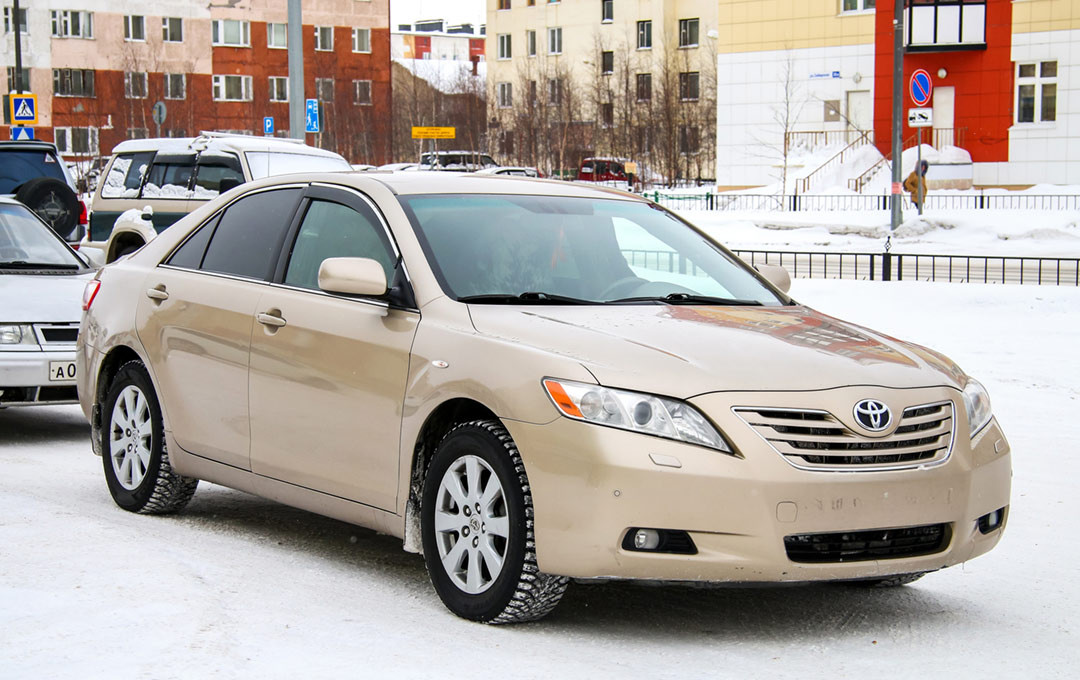
The Toyota Camry is a larger sedan that makes an excellent winter beater when bought used. It might not come to mind first for winter, but one driver noted that the cheapest running Camry you can find with snow tires will do everything you need it to, while requiring minimal maintenance to keep going. Older Camrys (and their Lexus ES siblings) are well known for longevity and a comfortable ride. The Camry’s heavier weight and smooth front-wheel-drive power delivery help it track confidently through snow. It’s not uncommon to see 15-year-old Camrys still running strong – perfect for a beater to absorb months of road salt and icy commutes while your nicer car stays salt-free.
5. Chevrolet Cavalier
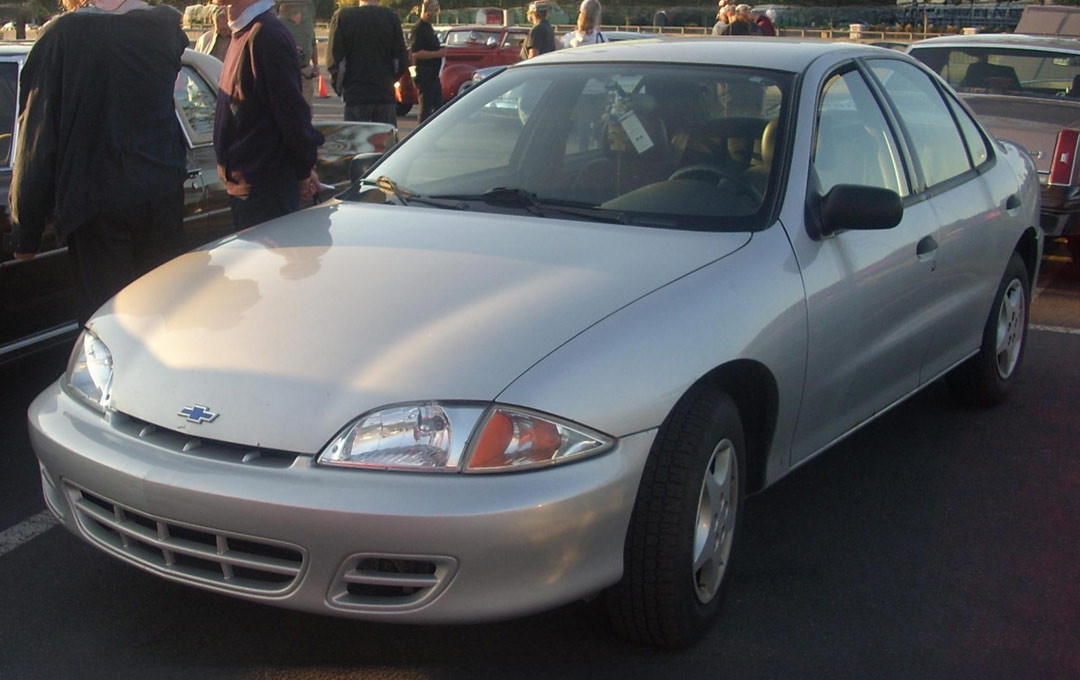
The Chevy Cavalier (and its cousin, the Pontiac Sunfire) is an example of a cheap Canadian winter beater classic. These compact cars from the 1990s and early 2000s can often be found for under $1000, and while they are basic, they are easy to fix and parts are everywhere. One owner swore that their $800 Cavalier on quality snow tires was an “absolute beast in the snow,” unstoppable in winter conditions. You won’t get modern luxuries or advanced safety features here – and many Cavaliers are coupes, which isn’t ideal for hauling lots of gear – but as a disposable winter runabout, a beat-up Cavalier at the right price can take snowy city streets and backroads in stride. Just be prepared for a few rattles and quirks in these old machines (and don’t expect much resale value afterward).
6. Old GM Front-Wheel-Drive Sedans (Buick/Chevrolet)
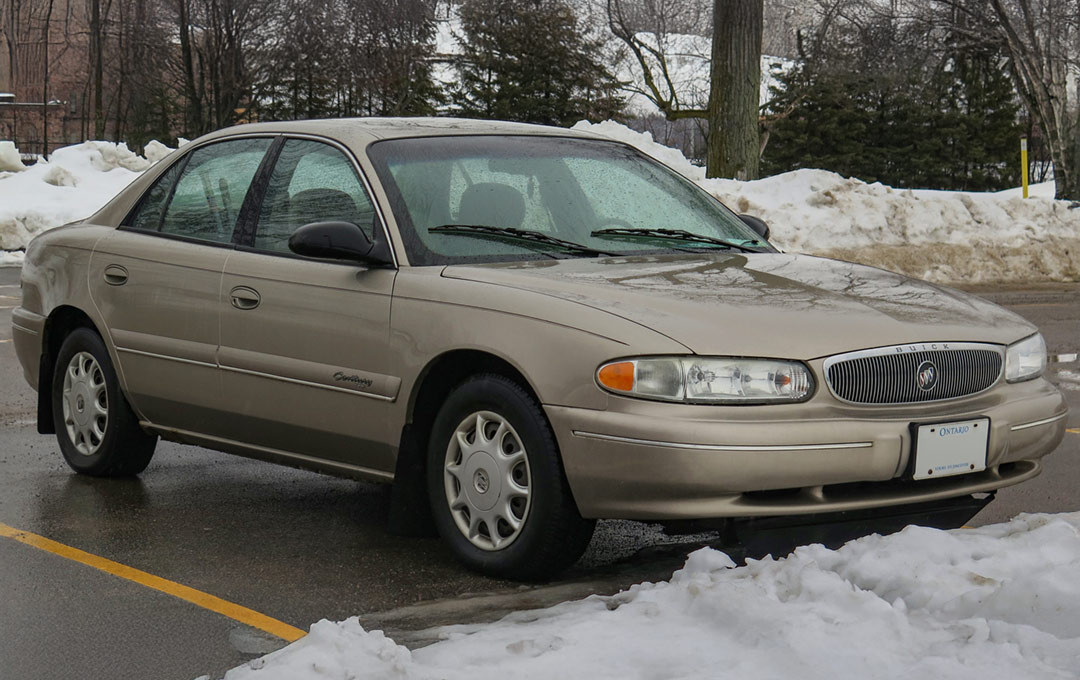
If you’re looking for a dirt-cheap winter tank, don’t overlook the midsize front-wheel-drive sedans that General Motors churned out in the 1980s and 1990s (think Buick Century, Chevrolet Celebrity, Pontiac 6000, etc.). These cars are certainly dated and not pretty – but as one driver put it, a mid-80s or 90s GM V6 sedan with snow tires will be “cheap, ugly, [and] nigh-unstoppable” in winter. An old Buick LeSabre or Chevy Lumina might have the aerodynamics of a brick, but the hefty weight and simple V6 drivetrain let it dig through snow surprisingly well. Many were owned by elderly drivers and can be found in decent mechanical shape for a song. They’re also couch-comfortable, with soft suspensions that soak up potholes. Sure, the fuel economy and styling are decades out of date, but if you just need a winter beater to sacrifice to the snow and road salt, an old GM front-driver can do the job.
7. Jeep Cherokee (XJ)

For tackling deeper snow and unplowed country roads, an older SUV like the Jeep Cherokee is a go-to winter beater. The late-1980s to 1990s XJ-generation Jeep Cherokee is legendary – it has a bulletproof 4.0L inline-six engine that will “run forever,” and a part-time 4x4 system that keeps you from getting stuck. As these Cherokees age, many develop rust, which makes them prime winter-beater material (once rust is showing, you might as well drive it through the winter and have fun). With high ground clearance and a rugged solid-axle suspension, the XJ can plow through snowbanks that would stop a car. You can often find an old Cherokee for a few thousand dollars or less. Just be aware that these SUVs are now quite old (the newest XJ is from 2001), so you’ll need to keep an eye on things like the brakes, fuel lines, and floor pans as the road salt takes its toll.
8. Toyota RAV4 or Honda CR-V
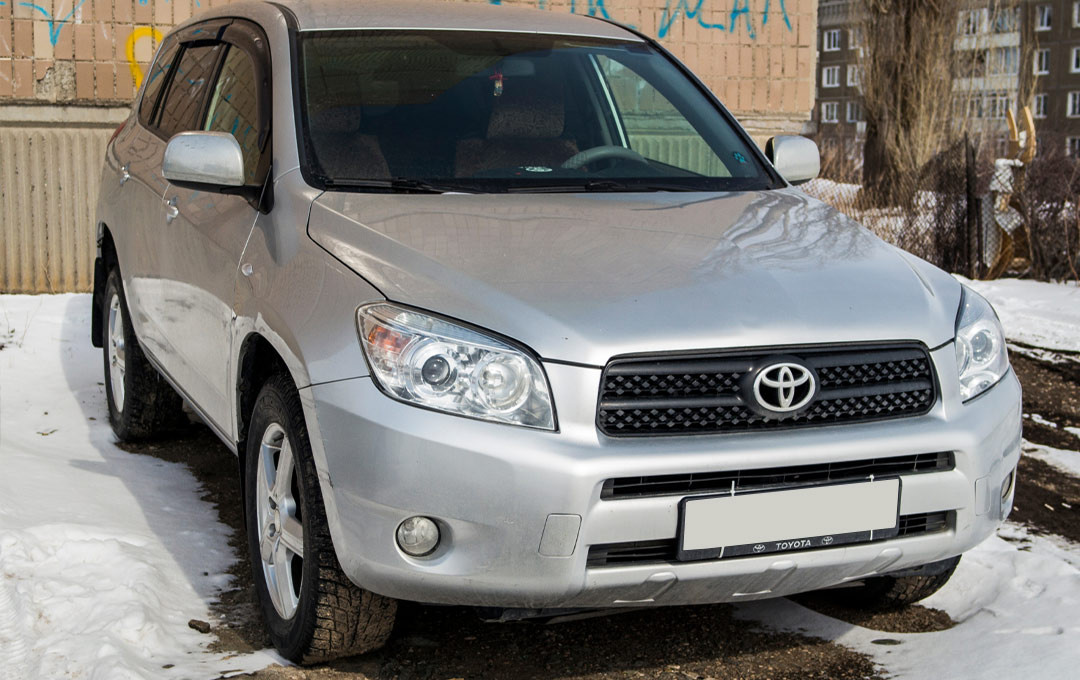
Compact SUVs like the Toyota RAV4 and Honda CR-V are terrific winter vehicles that have now become affordable on the used market. Early-2000s models with higher mileage can sell for relatively cheap, and you get the benefits of optional AWD and extra ride height for snow. One driver attested that even a front-wheel-drive RAV4 with good tires and traction control was “virtually unstoppable” in New York winter weather. The Honda CR-V and RAV4 are also known for reliability – they tend to rack up hundreds of thousands of kilometers if cared for, which is ideal for a beater you want to depend on. You’ll also enjoy some modern comforts (like ABS and airbags) in these SUVs. They might not be as tough off-road as a Jeep, but for Canadian city winters with occasional deep snow, a used RAV4 or CR-V is a smart, practical choice.
9. Jeep Patriot (or Compass)

Not everyone loves the Jeep Patriot, but as a cheap winter beater it has its merits. These compact crossovers (sold roughly 2007-2017) were often rental or fleet vehicles, so the resale values are low. You can pick up a high-mileage Patriot for a bargain, and if you opt for the 5-speed manual transmission, you avoid the CVT automatic that gave some owners headaches. The Patriot has available 4-wheel drive and decent ground clearance, so it can handle snow and rutted cottage roads better than a car. Its 2.4L four-cylinder engine is known to be relatively durable in the long run. A Patriot won’t win any awards for refinement, but throw on a set of winter tires and it’ll slog through the snow and slush just fine. (The very similar Jeep Compass offers the same pros and cons.) Think of it as a budget alternative to the more beloved Subaru – without the head gasket worries.
10. Saturn Vue (V6 AWD)
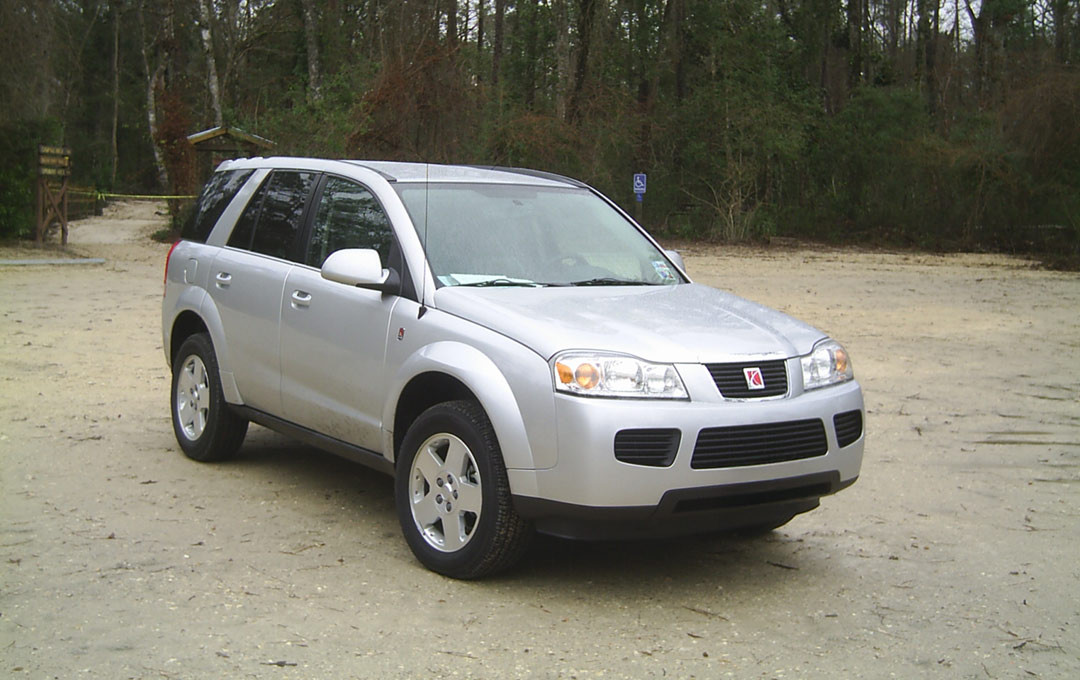
The Saturn Vue is an often-overlooked option for a winter beater SUV. Early to mid-2000s V6 AWD models can be found cheaply, and they have a secret weapon: a Honda-sourced 3.5L V6 in the 2004-2007 versions, which means solid reliability. Another bonus is the Vue’s plastic body panels – you don’t have to worry about the fenders rusting through (though the steel undercarriage can still suffer from road salt). One owner reported running a Vue for years with over 175,000 miles and said it “works great,” noting the plastic-bodied Vue has essentially no rust. The Vue’s part-time AWD system and decent ground clearance give it competence in snow, and it’s a roomy little SUV for winter gear. Just be cautious of the early CVT transmissions on 4-cylinder models (the V6 uses a regular automatic). A cheap Saturn Vue, especially the V6, can be a winter workhorse that you simply won’t care about scratching or dinging.
11. Ford Crown Victoria (Police Interceptor)

If your idea of a winter beater is a big, old-school boat, the Ford Crown Vic (and its Mercury Grand Marquis twin) fits the bill. These ex-police or taxi sedans are rear-wheel drive, V8-powered, and built on a stout full-frame – basically, a tank with a trunk. You might think a rear-wheel drive car would be helpless in winter, but the Crown Vic has a couple of tricks: a massive trunk and a very forgiving suspension. Toss a few sandbags in the back to weigh down the rear end, and with snow tires this car can slog through snow surprisingly well. As one publication notes, “sure it’s rear-wheel drive, but the giant trunk has plenty of space to add weight over the rear tires” to improve traction. These cars were also engineered to take abuse and run reliably for hundreds of thousands of kilometers. You can find used Crown Vics everywhere for cheap, and parts are abundant. The downside is terrible fuel economy and the sheer size of the thing, but as a winter barge to keep your nice car out of harm’s way, a Crown Vic gets the job done in comfort (just don’t expect nimble handling on ice).
12. Older 4x4 Pickup Truck
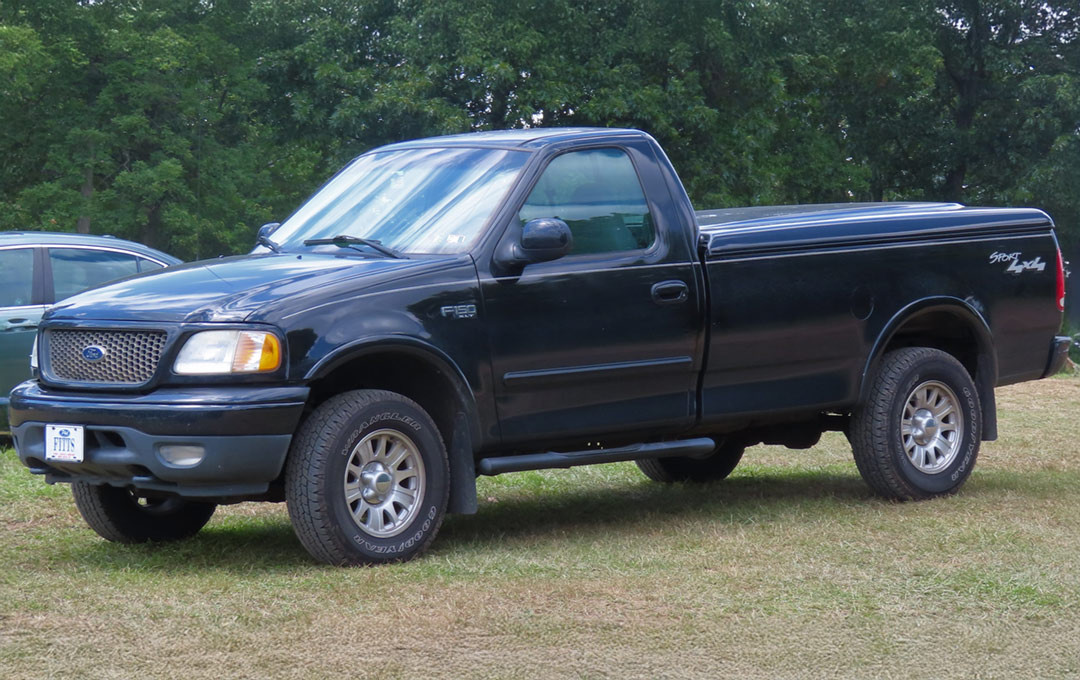
When snow piles up high, sometimes you can’t beat a four-wheel-drive pickup truck for getting around. Older pickups – whether it’s a 90s Chevy Silverado, early 2000s Ford F-150, or maybe a beater Toyota Tundra – are often sold cheap once they’ve lived a hard life. They might be rusty and rough around the edges, but that’s exactly what you want in a winter beater. A 4x4 truck gives you excellent ground clearance and traction, and you have the payload capacity to throw some weight (sandbags or extra cargo) over the rear axle for better grip. One advantage is being able to help tow or push stranded neighbors out of snowbanks. In fact, one reader recommended an old GMC Yukon or Chevy Suburban (the SUV cousins to pickups) as a top winter beater, noting you can find these full-size GMT800 GM trucks for under $5,000, and they are “rock-solid reliable and cheap to maintain” – plus they’ll happily pull your neighbours out of ditches in a blizzard. The obvious downsides: old trucks guzzle gas and can be clumsy on icy roads (especially if unloaded), and if the body is badly rusted you need to watch out for structural issues. But if you need to conquer deep snow or unplowed rural roads on the regular, an old 4x4 pickup is a trusty tool for the job.
13. Mazda Miata (MX-5)
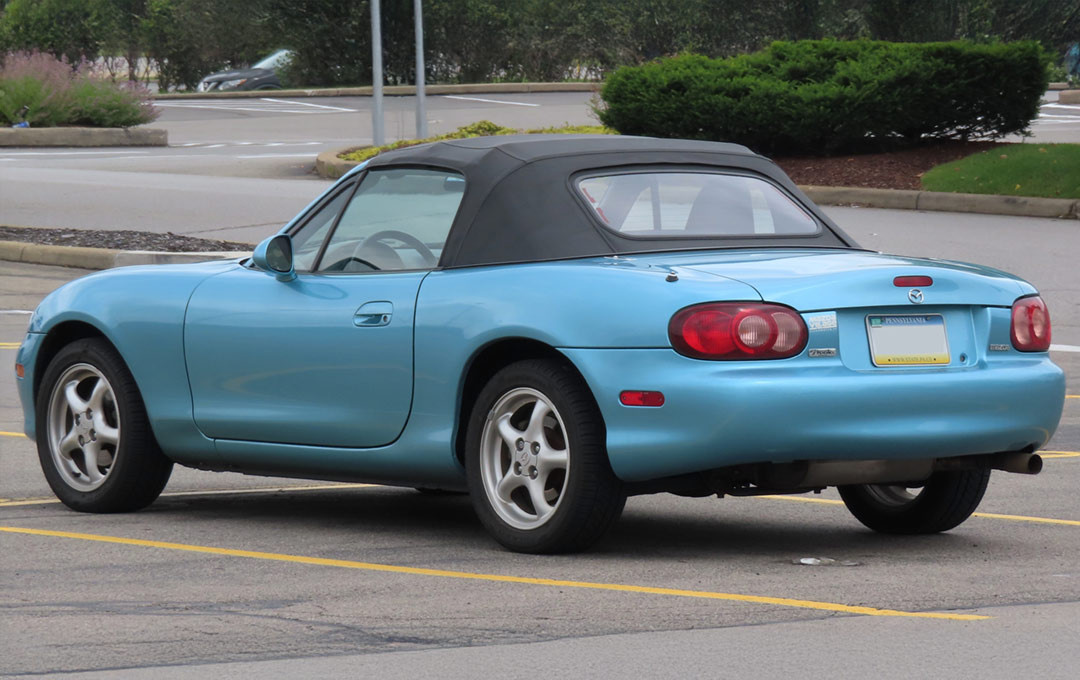
A lightweight convertible sports car as a winter beater? It sounds counterintuitive, but many enthusiasts have discovered the joy of winter driving in a Mazda Miata. The first-gen (NA) and second-gen (NB) Miatas from the 1990s and early 2000s are now quite cheap, and while they are rear-wheel drive, they’re also very well balanced. With the top up and a set of aggressive snow tires, a Miata can actually be a great winter car – the same qualities that make it fun in summer (lightweight, precise handling) also make it controllable in slippery conditions. One editor even noted that his lowered Miata on snow tires was “super capable” in winter driving. You’ll likely want a limited-slip differential for better traction, and you must run winter tires, but then you can delight in sliding around corners and treating your commute like a rally stage. Keep in mind, Miatas have low ground clearance, so they aren’t suited for deep snow. And obviously, space is limited (good luck fitting your hockey gear). Still, if you have a summer sports car and don’t want to garage it all winter, throwing some snow tires on a Miata or similar fun car can make winter driving enjoyable – just be prepared for curious looks from plow truck drivers.
14. Volvo 240 (or Other Old Volvos)
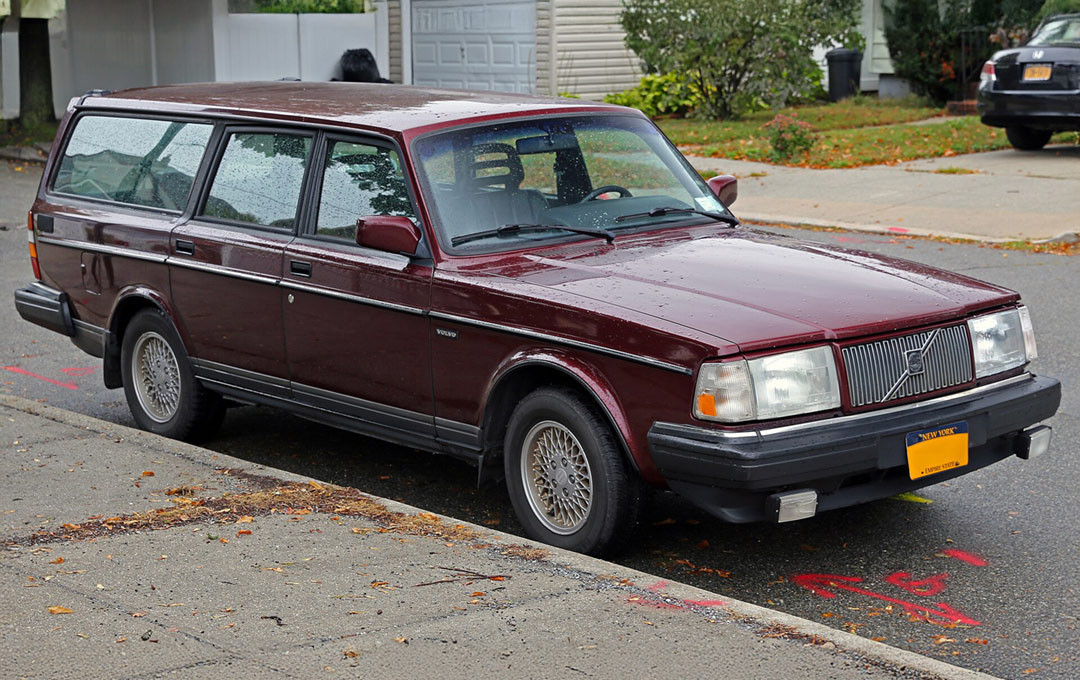
When it comes to shrugging off winter, the classic Volvo 240 is legendary. These Swedish bricks were built to endure harsh Scandinavian weather, and many are still on the road decades later. A clunky old rear-wheel-drive Volvo wagon or sedan with snow tires can hold its own even in Canadian storms. The Volvo’s hefty build and humble power mean it won’t easily get out of shape. As one source quipped, the 240 is a car that “will last far longer than it has any right to,” and if you slide it into a snowbank, you probably won’t break anything. Older Volvos (like the 240, 740, 940 series from the 1980s and 90s) are also fairly simple to work on and parts can be scavenged from junkyards. They have a reputation for running even when very neglected. You might need to invest in a fresh battery and make sure the defrosters and wipers work, but an ancient Volvo can be a charming winter tank. Plus, the heaters in these cars are usually incredible. Just watch out for body rust, as even a Volvo will eventually succumb to road salt after enough winters.
15. Older Saab (900, 9-5, etc.)
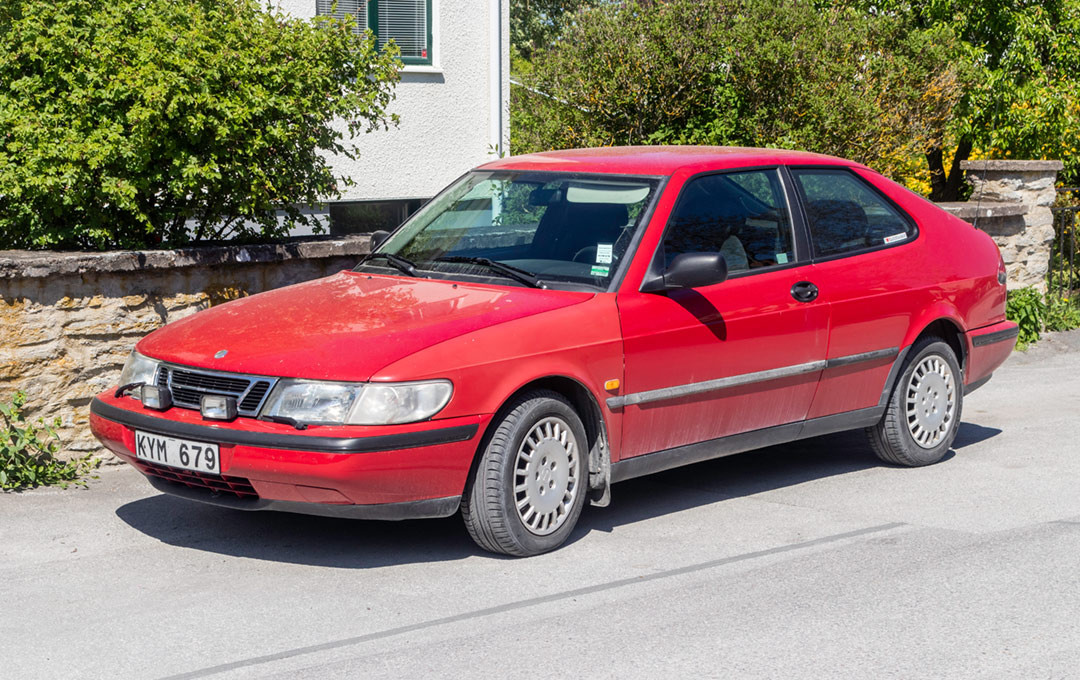
Rounding out the list are the old Saabs – those quirky Swedish cars that can often be found for cheap, especially since Saab is no longer around. A 15- or 20-year-old Saab 9-5 or late-90s 900 might be a gamble, but enthusiasts will tell you these cars are actually fantastic in winter. They’re typically front-wheel drive (or AWD in some later models), with Scandinavian-tuned handling and very effective heaters. One driver bragged that a “cheap old Scandinavian” FWD Saab with snow tires is practically unstoppable – he had plowed through two feet of snow in northern Michigan winters without an issue. The same driver noted you can clutch-kick around snowy corners to easily swing the rear end out in a controllable drift (Saabs can be surprisingly fun in the snow!). And of course, the heated seats and quirky Saab turbo boost can make winter driving a bit more enjoyable. The catch is maintenance: Saabs have a mixed reputation for reliability, and finding parts can be tougher now. But if you can snag an old Saab for peanuts and keep up with basic things like oil changes, it can serve as a fast, comfortable winter beater that’s a little different from the usual Civics and Corollas.
Winter Beater Tips
No matter which winter beater you choose, a few prep steps will help it survive the cold. Make sure the car has a fresh battery (cold weather is tough on old batteries), fresh antifreeze, and good wiper blades for snow and ice. For good measure, throw an emergency kit in the trunk (including a shovel, blanket, and jumper cables) in case you get stuck. And finally, try to wash off the road salt occasionally and spray the undercarriage – it will help slow down the rust, so your trusty winter beater lives to fight another season.
Ready to buy a used car from this list?
We recommend getting pre-approved first! With a pre-approval, you can shop with confidence knowing exactly what you can afford. Get pre-approved online in under 3 minutes. Any credit accepted!
FAQ: Best Winter Beaters
- What makes a good winter beater?
A good winter car is usually an older, inexpensive vehicle that you don’t mind exposing to snow, ice, and road salt. The best winter beaters are reliable, easy to repair, and cheap to maintain. Add a fresh battery, a good set of winter tires (ideally on steel wheels), and you’ll be ready for months of tough winter driving. - Do I need all-wheel drive for a winter beater?
Not necessarily. While AWD and 4x4 can help in deep snow, most cars with front-wheel drive perform extremely well in winter if they have proper snow tires. For good measure, remember that traction and braking on ice depend more on tires than on the drivetrain. - Are rear-wheel drive cars bad in the snow?
Rear-wheel drive cars aren’t ideal for Canadian winters, but they can still be fun winter driving machines. For example, older rear-wheel-drive Volvos or even a Ford Crown Vic can be great winter beaters if you add weight over the rear end and run quality winter tires. They won’t beat AWD for traction, but they can still get you through. - What should I check before buying a winter beater?
- Look for rust (especially from road salt)
- Check common issues like head gaskets on Subarus or worn suspension parts
- Ensure the heater and defroster work
- Test the brakes and battery
- Make sure you’re buying at the right price for its age and mileage
- Which cheap cars are considered good winter beaters in Canada?
Popular options include Honda Civics, Toyota Corollas, older Subarus, Chevy Cavaliers, Toyota Camrys, and even old 4x4 pickup trucks. Many drivers in snowy regions like Northern Michigan swear by simple, durable cars with a manual transmission for maximum control on slippery roads. - How much should I spend on a winter beater?
Most people aim to spend under $5,000 for a dedicated beater, though some find usable cars under $2,000. Remember: the goal is to protect your nice car from harsh winter weather while still driving something safe and reliable. - Can a winter beater also be a fun car?
Absolutely. Some people turn older fun cars like a Mazda Miata or Saab 900 into quirky but capable great winter beaters. With the right setup of snow tires, even sporty cars can bring joy to otherwise miserable commutes.



